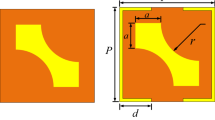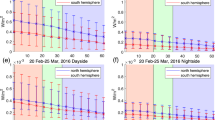Abstract
SINCE the ionosphere is a doubly refracting medium, due to the influence of the earth's magnetic field, a plane-polarized radio wave incident normally on it is split into two elliptically polarized components of opposite rotational sense. For a certain range of frequencies, in the neighbourhood of the gyro-frequency, only one of these two components is reflected in strength, the other being strongly absorbed. In northern temperate latitudes this reflected component is of left-handed, approximately circular, polarization. In corresponding latitudes in the southern hemisphere the sense of the polarization is reversed.
This is a preview of subscription content, access via your institution
Access options
Subscribe to this journal
Receive 51 print issues and online access
$199.00 per year
only $3.90 per issue
Buy this article
- Purchase on SpringerLink
- Instant access to full article PDF
Prices may be subject to local taxes which are calculated during checkout
Similar content being viewed by others
Author information
Authors and Affiliations
Rights and permissions
About this article
Cite this article
APPLETON, E. A Simple Method of Demonstrating the Circular Polarization of lonospherically Reflected Radio Waves. Nature 151, 250 (1943). https://doi.org/10.1038/151250a0
Issue date:
DOI: https://doi.org/10.1038/151250a0
This article is cited by
-
Solution to the Avogadro constant challenge
Analytical and Bioanalytical Chemistry (2010)



